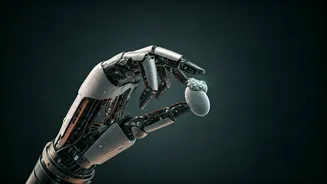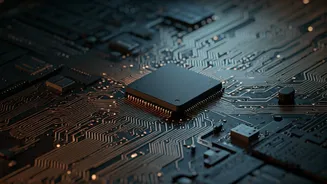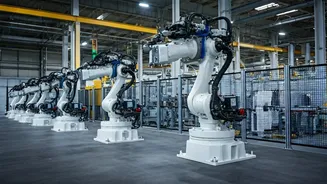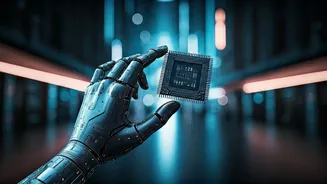Mimicking Human Hands
The primary goal driving the development of robotic hands is to emulate the remarkable capabilities of human hands. This requires overcoming significant
engineering challenges, including replicating the complex bone structure, muscles, and sensory feedback systems that contribute to human dexterity. Researchers are employing various strategies, such as developing flexible materials and integrating sophisticated sensors, to mimic the human hand's range of motion and tactile sensitivity. The design process is also heavily influenced by the diverse tasks robotic hands are expected to perform, from delicate surgical procedures to robust industrial operations. This has led to the emergence of diverse designs, each optimized for specific applications and reflecting the ingenuity of engineers and designers striving to enhance human-robot interaction. It is a constantly evolving field.
Technological Advancements
Several technological breakthroughs have propelled the advancement of robotic hands. The use of advanced materials, such as lightweight alloys and flexible polymers, has improved the hand's ability to withstand pressure and move freely. The integration of sensors, including force sensors and tactile sensors, enables the robotic hand to feel and react to its environment, allowing for precise object manipulation. In addition, advancements in control systems and artificial intelligence have improved the robotic hand's ability to learn and adapt to various tasks. These technologies are integral to the evolution of robotic hands, paving the way for more sophisticated and versatile robotic systems.
Design and Functionality
The design of robotic hands varies significantly based on their intended use. Some are designed for high precision, such as those used in surgery, with fine motor control and intricate manipulation capabilities. Other designs emphasize strength and durability for industrial applications, where they handle heavy objects and perform repetitive tasks. The number of fingers, the range of motion, and the materials used are all selected according to the specific application. This diversity reflects the versatility of robotic hand technology, capable of adapting to a wide range of tasks and environments. Furthermore, the evolution of these designs constantly reflects technological improvements and the needs of various sectors, pushing the boundaries of what is possible.
Future of Robotics
The development of robotic hands will have a profound impact on several industries, improving human capabilities, and transforming the landscape of work and daily life. In healthcare, they will enable more precise and minimally invasive surgeries, leading to improved patient outcomes. In manufacturing, they will boost efficiency and productivity by automating repetitive and hazardous tasks. The integration of robotic hands into assistive devices has the potential to help people with disabilities by providing them with greater independence and improved quality of life. As technology continues to improve, robotic hands will become more capable, versatile, and integrated into our daily lives.











